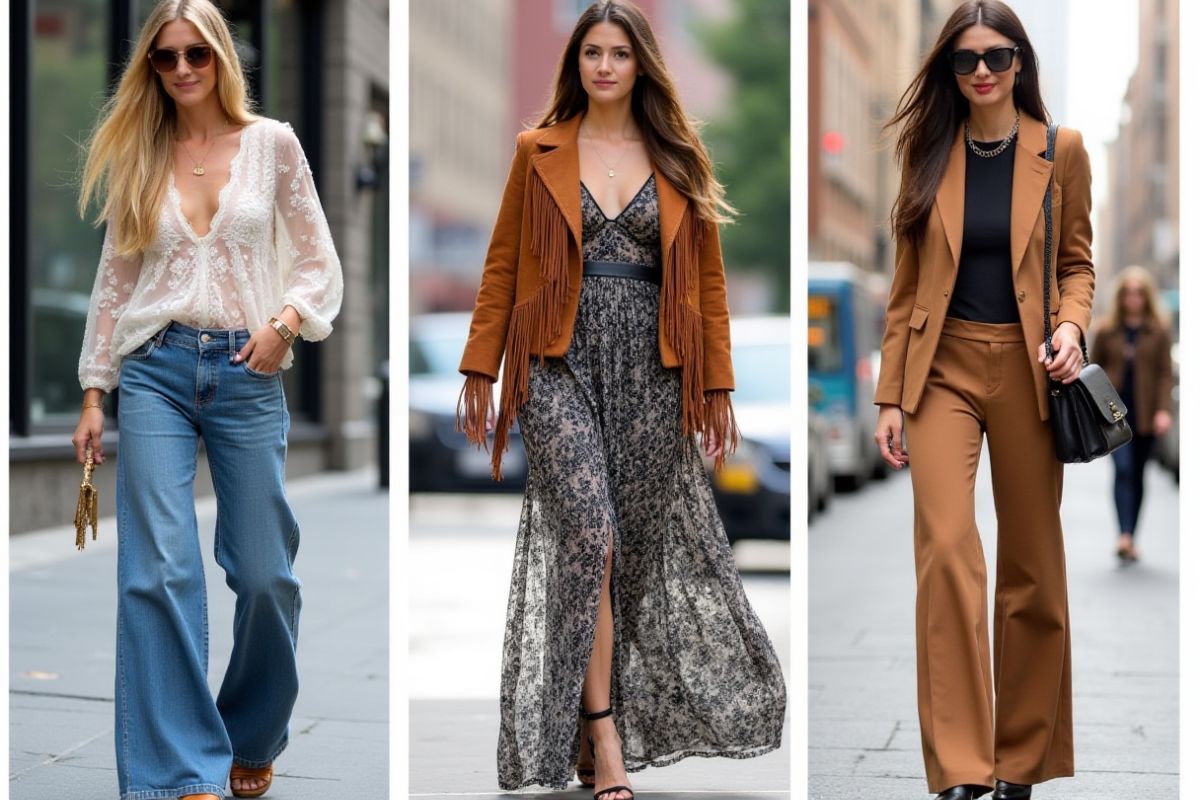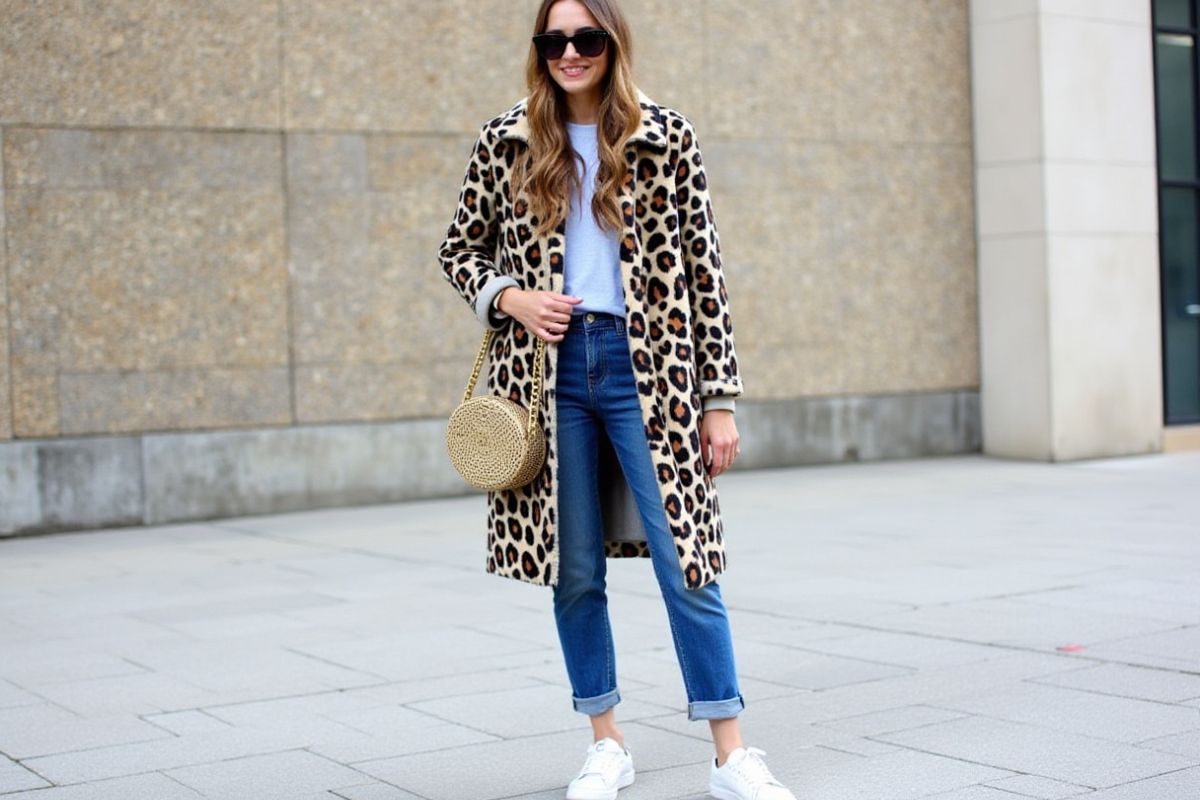Fashion

The 2010s fashion era was a vibrant mix of nostalgic revivals, cutting-edge streetwear, minimalist aesthetics, and a growing consciousness toward sustainability. Influenced by the rise of social media platforms like TikTok, fashion blogs, and celebrity style icons such as Rihanna and Kanye West, the decade redefined how we consume and engage with style. From Fashion Week runways to casual street style, the 2010s shaped a generation of fashion-forward thinkers and trendsetters.
Read more: Exploring 2010s Fashion Trends: A Look Back at Iconic Styles

The classic polo shirt is experiencing a major trend evolution as we approach the end of 2025. Once considered a strictly preppy or sporty piece, the polo is now being reimagined with a distinctly feminine edge. This wardrobe staple is shedding its traditional associations and emerging as a versatile and stylish option for the modern woman. Expect to see a resurgence of the polo shirt in unexpected fabrics, silhouettes, and styling choices.
Read more: Polo Shirts Get a Feminine Twist: 2025 Fashion Forecast

When we talk about fashion trends in 2025, activewear isn’t just a category—it’s a cultural movement. Women’s activewear continues to blur the line between functionality and aesthetics, giving us apparel that works just as well for pilates or high-intensity workouts as it does for brunch. Let’s dive into the activewear trends set to dominate in 2025, from innovative fabrics to standout silhouettes.
Read more: Cute Activewear Trends: Fitness Meets Style in 2025

The strapless dress is a timeless and glamorous choice for formal events, offering a sophisticated silhouette that can flatter many body types. However, wearing a strapless dress can sometimes bring worry about wardrobe malfunctions. This article will provide expert tips on how to keep a strapless dress secure and in place, so you can rock a strapless dress confidently and gracefully.
Read more: Strapless Dress Style: Tips to Keep Your Dress Up While Wearing It

The early 2000s called—and we’re not mad about it. The skirt-over-pants combo, once worn fearlessly by icons like Ashley Tisdale, Raven-Symoné, and the ever-stylish Lizzie McGuire, is back. But this time, it’s got a distinctly Aussie twist—cooler, cleaner, and a whole lot more wearable.

The aquatic fashion trend, particularly the enchanting mermaid aesthetic, is making waves on the 2025 runways. Designers are diving deep into the ocean's allure, crafting garments that echo the shimmering scales and fluid forms of underwater life. With a focus on iridescent fabrics, flowing silhouettes, and vibrant colors inspired by marine ecosystems, the mermaid trend is set to captivate fashion enthusiasts and redefine elegance for the upcoming year. As we explore this aquatic realm, we anticipate a celebration of creativity and the beauty of the sea in contemporary fashion.
Read more: Dive In: Aquatic Fashion Trends Making Waves in 2025

The mini skirt has long been the reigning star of summer wardrobes, but the 2025 runways are declaring a new champion: hot pants. From Prada’s tailored silhouettes to Miu Miu’s lace-trimmed versions, this daring piece is officially one of the biggest trends of 2025, reshaping what we consider the ultimate wardrobe staple for summer 2025 fashion.
Read more: Move Over Mini Skirt: Why Hot Pants Are 2025’s Hottest Trend

In the digital age, the allure of unbeatable deals during "closing-down sales" often masks a deceptive reality. This article delves into the intricate workings of these fraudulent schemes, exposing how scammers exploit shoppers' trust and create fake websites on social media platforms like Facebook and Instagram, all while feigning the closure of a business. By understanding the red flags and mechanics of these operations, consumers can better protect themselves from falling victim to these sophisticated scams across Australia.
Read more: Ghost Stores & Fake Farewell Sales: Unraveling the Scam Behind ‘Closing-Down Sales’ Ads

Get ready for a sunny disposition in 2025! A specific hue is poised to take center stage and redefine the landscape of fashion, design, and consumer preferences. Forget the bold and bright primary colors of the past; a softer, more nuanced shade is about to reign supreme.
Read more: Yellow Everything: The Colour Trend Dominating 2025

If you’ve been paying attention to the runway, you already know: boho chic is back—and it’s bigger, bolder, and more effortlessly chic than ever. With suede emerging as the cornerstone fabric of the 2025 fashion trend, designers are leaning into the bohemian style that first defined icons like Kate Moss, Sienna Miller, and Jane Birkin, but with a distinctly modern boho edge.
Read more: Boho Chic Revival: Styling Suede for 2025’s Trendiest Looks
You might also be interested in ...
 2025 Autumn Winter: Chic Trends in Jackets and Coats for Outerwear Fashion
2025 Autumn Winter: Chic Trends in Jackets and Coats for Outerwear Fashion
As the chill settles in and layers become...
 2025: Essential Pieces for Your Autumn Capsule Wardrobe
2025: Essential Pieces for Your Autumn Capsule Wardrobe
As the leaves begin to fall and the temperature...
 Sheer Statements: How to Layer the Transparent Fashion Trend for 2025
Sheer Statements: How to Layer the Transparent Fashion Trend for 2025
By Riley Westonfield, Fashion Weekly’s Style...
 Beyond Greenwashing: The Rise of Ethical Sustainable Fashion 2.0 in Australia
Beyond Greenwashing: The Rise of Ethical Sustainable Fashion 2.0 in Australia
Once a niche movement whispered about on the...
 Think You're Not Cheating? Here’s What Counts as Digital Infidelity in 2025
Think You're Not Cheating? Here’s What Counts as Digital Infidelity in 2025
In 2025, the line between flirtation and...
 Ways to Keep the Spark Alive in a Long-Term Relationship Tips
Ways to Keep the Spark Alive in a Long-Term Relationship Tips
Let’s be real—every love story evolves. That...
 AI & Modern Relationships 2025: Virtual Love & Intimacy Apps
AI & Modern Relationships 2025: Virtual Love & Intimacy Apps
by Sienna Hartsome, Relationships Expert at...
 2025 Nail Trends: The Biggest Nail Designs and Art Ideas That Will Dominate
2025 Nail Trends: The Biggest Nail Designs and Art Ideas That Will Dominate
If there’s one thing we know about beauty in...
 Why the Australian Beauty Industry Is the Global Beauty Hotspot Right Now
Why the Australian Beauty Industry Is the Global Beauty Hotspot Right Now
Australia’s beauty industry is having a breakout...
 How AI Technology is Revolutionising Skincare Routines in Australia
How AI Technology is Revolutionising Skincare Routines in Australia
Tech and beauty have officially collided — and...
 Grooming Trends for Aussie Men in 2025: The Ultimate Style Guide
Grooming Trends for Aussie Men in 2025: The Ultimate Style Guide
Men’s grooming in 2025 is all about...
 Cozy Autumn Dinner: Decorate & Bucket List for Autumn Vibes
Cozy Autumn Dinner: Decorate & Bucket List for Autumn Vibes
Ah, autumn—the season that whispers in golden...
 Digital Decluttering: The Self-Care Practice Australians Are Embracing in 2025
Digital Decluttering: The Self-Care Practice Australians Are Embracing in 2025
In 2025, self-care has taken on a new form — one...
 The Minimalist Lifestyle Boom: Why Less is So Much More in 2025
The Minimalist Lifestyle Boom: Why Less is So Much More in 2025
Let’s be honest — life can feel like a...
 Sober Curious: Why More Australians Are Saying “No Thanks” to Booze in 2025
Sober Curious: Why More Australians Are Saying “No Thanks” to Booze in 2025
Once upon a time, saying no to a drink came with a...





